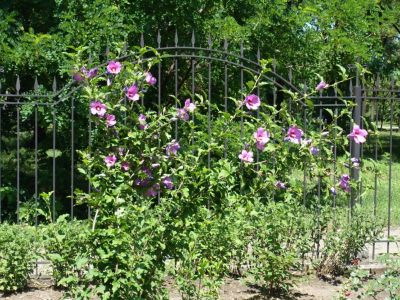Rose of Sharon pruning done later than early spring may cause the loss of some blooms, but those that are not removed will be larger. Learning how to prune a rose of Sharon and when to prune rose of Sharon is simple once you learn the methods. Younger shrubs may benefit from a light pruning while older specimens may need more extreme branch removal. When planning to trim a rose of Sharon, stand back and take a look at the overall form. Younger shrubs grow upward and have an erect form, but older specimens may have attractive, drooping branches. To maintain either form when pruning rose of Sharon shrub, remove wood to the first or second node (bump on the limb). If growth appears untidy and out of hand, rose of Sharon pruning may need to be further down the stem. Annual rose of Sharon pruning prevents an untidy appearance.
How to Prune a Rose of Sharon
When pruning rose of Sharon shrub, begin by removing any branches that appear dead or damaged from storm or winter damage. Also, remove branches that appear to have gone awry or are growing in the wrong direction. Top, upright growth may be pinched back to encourage the growth of side branches. Oldest and tallest stems can be removed first. An important step in rose of Sharon pruning is removal of any suckers sprouting from the bottom of the trunk, growing from the roots or spouting in the nearby growing area. Pruning rose of Sharon shrub will include the removal of older, inner branches that disturb an open and airy appearance. Thin out branches which block sunlight or prevent air circulation through the plant. Remove weak branches further down and only prune back healthy branches to the node which allows the desired appearance. As a rule of thumb, allow 8 to 12 inches (20-31 cm.) between inner branches for the best flowering display. If your rose of Sharon bush is old and has not been pruned in several years, renewal pruning rose of Sharon shrub offers the opportunity to start over. In late autumn or winter, cut older trunk branches down by two thirds of the tree’s height. Some prune these back even closer to the ground. This rejuvenation pruning allows a new form to develop in spring when new growth emerges and affords the opportunity to keep up with annual pruning. This type of pruning may result in a loss of blooms the following year, but is well worth the loss for a newly formed shrub. Whether your pruning chore is only to trim a rose of Sharon or to cut it back severely, you will be rewarded with more vigorous growth and possibly larger flowers the next year.
